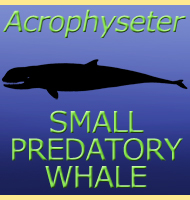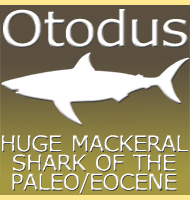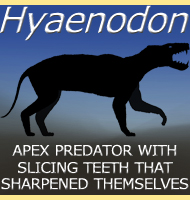


Pakicetus
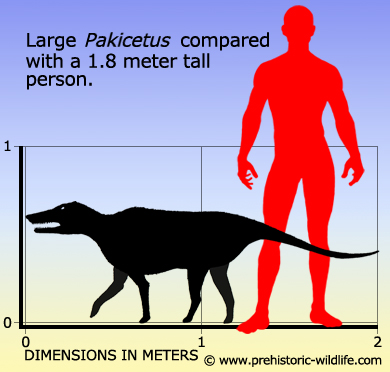
Name:
Pakicetus (Pakistan whale).
Phonetic: Pa-kee-see-tuss.
Named By: Gingerich & Russell - 1981.
Classification: Chordata, Mammalia, Cetacea,
Archaeoceti, Pakicetidae, Pakicetinae.
Species: P. inachus (type),
P.
attocki , P. calcis, P. chittas.
Diet: Carnivore.
Size: Between 1 and 2 meters long.
Known locations: Pakistan.
Time period: Ypresian to early Bartonian of the
Eocene.
Fossil representation: Several individuals of
partial remains.
Pakicetus
may well be the oldest known ancestor to modern whales,
and along
with other animals such as Ambulocetus,
represent the group of
terrestrial carnivores that began developing adaptations for a wholly
aquatic lifestyle.
Due
to its transitional nature, it is hard to say with certainty how
Pakicetus lived. Its ear structure is more
developed for hearing in
the air. Other forms such as the aforementioned Ambulocetus
had ears
that worked best when submerged in the water. This indicates that
Pakicetus itself spent more time out of the water
than in it.
Analysis
of the fossil site indicates that it was a coastal region at the time,
and as such possibly had many estuaries and islands. Pakicetus
has
been envisioned by some as a wolf sized predator that would dive into
the water after fish. In this scenario it could have focused its
attention upon prey that had become trapped in tidal pools at low
tide.
The
bones of Pakicetus indicate dense bone growth, a
well-known
adaptation in animals that spend a lot of time in the water. This
bone analysis combined with the positioning of the eyes near the top of
the skull has brought the second hunting theory of lurking in the water
like a crocodile.
Either
way it may be that these marine adaptations are not just driven by
predatory forces but practical ones too. Pakicetus
may have had to
cover a lot of ground to find food, and the rising and falling tides
may have cut off some areas of the coast, creating islands at high
tide that would have had passable land bridges at low tide. By
evolving into a body that could provide efficient aquatic movement,
Pakicetus would have had an advantage in not having
to wait for the
low tide.
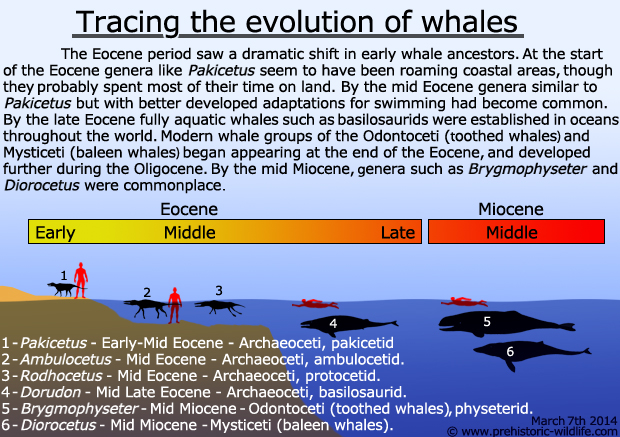 |
| More information on these whales can
be found on their respective pages; 1 - Pakicetus, 2 - Ambulocetus, 3 - Rodhocetus, 4 - Dorudon, 5, Brygmophyseter, 6 - Diorocetus. |
Further reading
- Middle Eocene large mammal assemblage with Tethyan affinities, Ganda
Kas region, Pakistan. - Journal of Paleontology 54(3):508-533 - R. M.
West - 1980.
- Pakicetus inachus, A New Archaeocete (Mammalia,
Cetacea) from the
Early-Middle Eocene Kuldana Formation of Kohat (Pakistan) -
Contributions from the Museum of Paleontology, The Museum of Michigan
25 (11): 235–246 - Philip D. Gingerich & Donald E. Russell -
1981.
- Origin Of Underwater Hearing In Whales - Nature 361 (6411): 444–445.
- J. G. M. Thewissen & S. T. Hussain - 1993.
- New middle Eocene archaeocetes (Cetacea: Mammalia) from the Kuldana
Formation of northern Pakistan. - Journal of Vertebrate Paleontology
29(4):1289-1299 - L. N. Cooper, J. G. M. Thewissen & S. T.
Hussain - 2009.
- From Land to Water: the Origin of Whales, Dolphins, and Porpoises -
Evolution: Education and Outreach 2 (2): 272–288. - J. G. M. Thewissen,
L. N. Cooper, J. C. George & S. Bajpai - 2009.
----------------------------------------------------------------------------
Random favourites
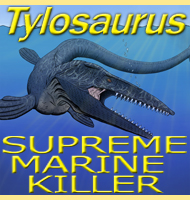 |
 |
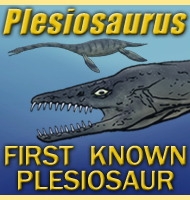 |
 |


